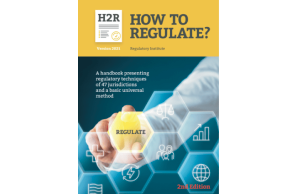The purpose of the handbook is to assist officials involved in regulatory activities. Readers can draw inspiration from it, can learn how colleagues have tackled a certain regulatory challenge and can even develop a tailor-made systematic approach to improve their regulation. The handbook can also be used as a basis for training courses or for self-training.
The handbook is not intended to be read from A to Z. Instead, readers are invited to pick and choose the sections that are relevant to them. The handbook was not developed to be the authoritative source of how to regulate, but to offer in the most neutral and objective way possibilities for improving regulation.
The handbook explores the empty space between:
- the constitution or similar documents setting the legal frame,
- the sector-specific policies followed by the government, administration, or institution,
- the impact assessment, better regulation, simplification, and other regulatory policies,
- applicable drafting instructions or recommendations, and
- the procedural settings of the respective jurisdiction.
The chapters of this edition cover the following:
- Introduction.
- The architecture of regulations.
- The small scale building blocks of regulation: the requirements and other provisions.
- Typology of incentives and regulatory measures.
- The method of regulating.
- The scope.
- Other basic questions of regulation.
- Understanding risks, quantified requirements and multi-dimensional impacts.
- References.
- Verifying conformity in advance (ex ante).
- Ex post verification / enforcement.
- Other implementation questions.
- Miscellaneous: transitional provisions, validity of decisions, applicability of other regulations etc.
- Working methods and ethics.
- Integral quality verification.




